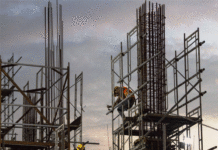By Prashin Jhobalia, VP Marketing Strategy, House of Hiranandani
The Old Mahabalipuram Road (OMR), also known as Rajiv Gandhi Salai, is a 45 km arterial road stretching from Madhya Kailash temple in Adyar (South Chennai) to Mahabalipuram in the Kanchipuram district. Popularly known as Chennai’s IT corridor, this is a buzzing location and an aspirational residential destination. Presence of IT parks, connectivity to prime locations, and proposed infrastructure development have made this location as the key growth corridor of Chennai city.
The origination of OMR:
OMR gained prevalence as a route post connecting Kotturpuram bridge to Mahabalipuram in 1987, one significant tourist attraction of Chennai securing a solid link to Taramani and beyond. The Mahabalipuram road, was named old when the new East Coast Road parallel to it was completed in 1998.
The Indian Institute of Technology was built in Guindy, transforming 600 acres of forest in the early 1960s, where the Rajiv Gandhi Salai road today commences, was a shift of decentralization of the city core and land use. Apart from the notable Universities, the corridor was initially anchored by numerous institutions drawing a vibrant crowd. Owing to the intellectual evidence coupled with a mammoth of migrants flocking to the educational destinations added to the beginning of the IT corridor. However, the economic liberalization in the early 1990s acted as the backbone of this endeavour. Gradually in 2000 development of Tidel Park and IT park in SIPCOT further changed the fortune of the location.
Today, OMR, one of the city’s crown jewels, offers its residents many advantages, from connectivity, to social infrastructure and return on investment, to name a few.
Here are some of the key benefits of living at OMR.
CONNECTIVITY:
The OMR strategically runs parallel with East Coast Road (ECR) and provides an easy commute to areas along the OMR stretch as well as localities situated outside the city limits. The Thoraipakkam – Pallavaram radial road provides an easy commute from Thoraipakkam, which falls along the OMR stretch. The other key link roads such as Maraimalai – Adigal Bridge, Medavakkam – Karapakkam enhance connectivity from OMR.
The city’s main railway station is around 35 km and can be accessed by Rajiv Gandhi Salai IT expressway. The Guindy railway station that is connected with the local railway network is located only 20 km from OMR.
The international airport is located 30 km from the OMR. It can be reached through the Chennai – Nagapattinam highway.
The proposed infrastructural development plans will further strengthen the connectivity along the OMR region. Some of the proposed plans include:
- Phase 2 of the Chennai Metro Rail spanning 118.9 km covering areas from Madhavram to SIPCOT, will largely benefit the localities along OMR.
- Multi deck elevated corridor: A 3-deck elevated corridor has been proposed by the Tamil Nadu government that will merge with the metro rail.
- Chennai peripheral road project: The proposed road will be joining four National Highways (NH5, NH205, NH4, NH45) and eight state highways that will boost up seamless connectivity from the suburbs to the city core.
IT PARKS AND ENTRY OF OTHER SECTORS:
Today, OMR is one of the core employment nodes in Chennai city because of the large number of IT parks and well-known companies.
The corridor of Madhya Kailash to Siruseri contributes three-quarters of the state’s software exports. They include Tidel Park, SIPCOT IT Park and Futura Tech Park. Among the IT companies that operate from here are TCS, Wipro Technologies and HCL Technologies.
Technological advancements, infrastructure development, competitive rentals encouraged companies from other industries to set their office spaces along OMR. The amalgamation of diverse sectors along the zone led to the formulation of the Secondary Business District, providing not only a powerful economic spine but an avenue of job and economic wealth not restricted to a single sector.
SOCIAL INFRASTRUCTURE:
Due to the tremendous growth of localities along OMR, the suburbs from this region were included in the limits of the Chennai corporation that improved their access to basic infrastructure.
Presence of IT parks along OMR has also resulted in emergence of several reputed educational institutes including international schools such as Vellore International School, Chettinad Sarvalokaa Education, Gateway- The Complete School to name a few. The location also has fully equipped medical facilities such as Apollo Speciality Hospital, Supreme Hospital, Chettinad Hospital and Research Institute, supermarkets and entertainment zones. These have not only raised the quality of life of OMR residents, but also have transformed the identity of this location, making it one of the most popular areas of Chennai.
RESIDENTIAL DEVELOPMENT AND RETURNS ON INVESTMENT:
Presence of large tracts of land along this stretch led to development of integrated townships in these localities that met the demand for housing from the IT professionals working in OMR.
House of Hiranandani strategically placed in the hotspots of the South, is an imminent residential target in a thriving pocket adjacent to the major IT and Industrial Corridor with surplus substantial growth potential
Today, OMR has evolved as a self-sustained locality with the presence of robust connectivity, necessary physical and social infrastructure and ample job opportunities. The location has also provided impressive returns on investment in a short duration.
Corporate Comm India (CCI Newswire)




















